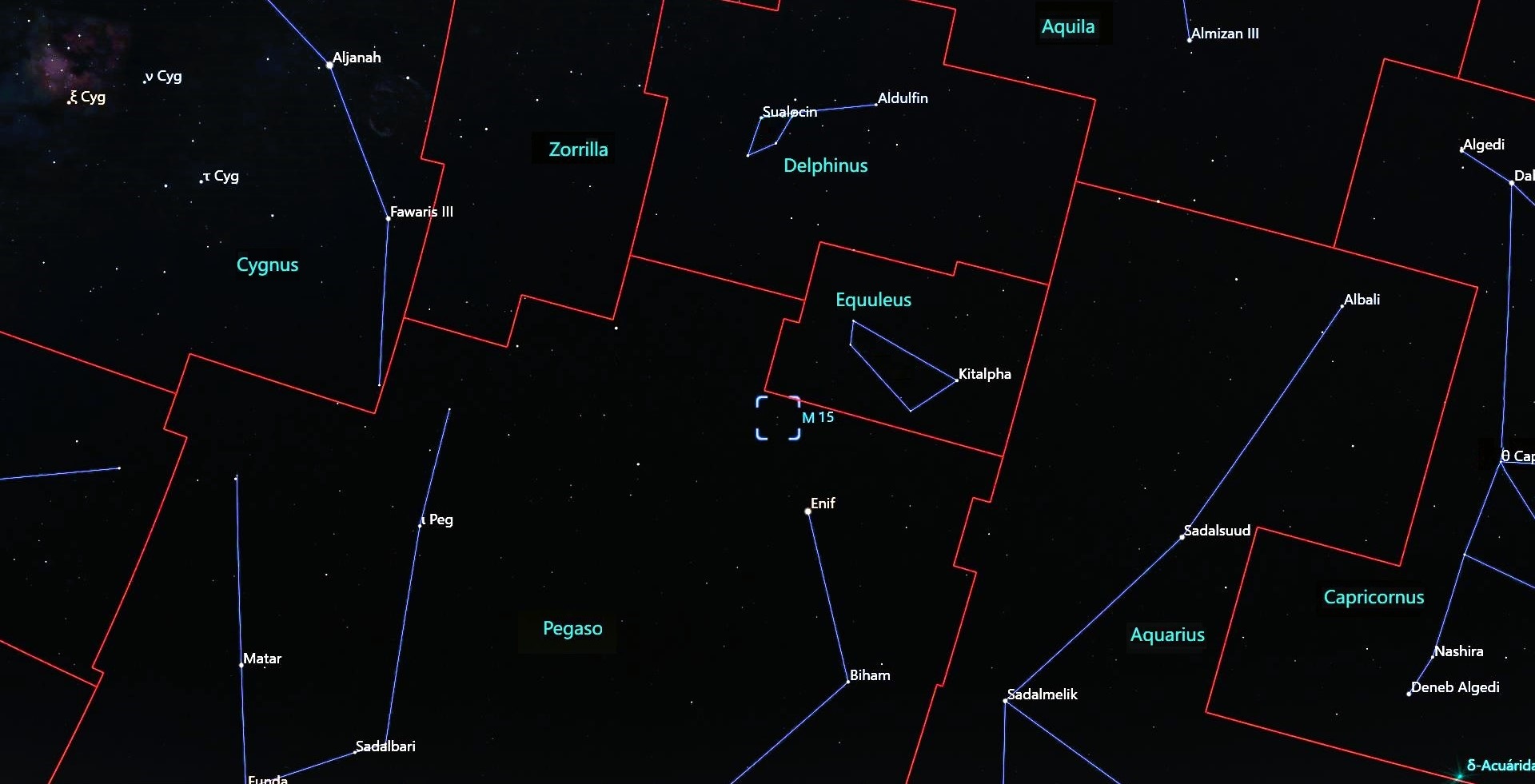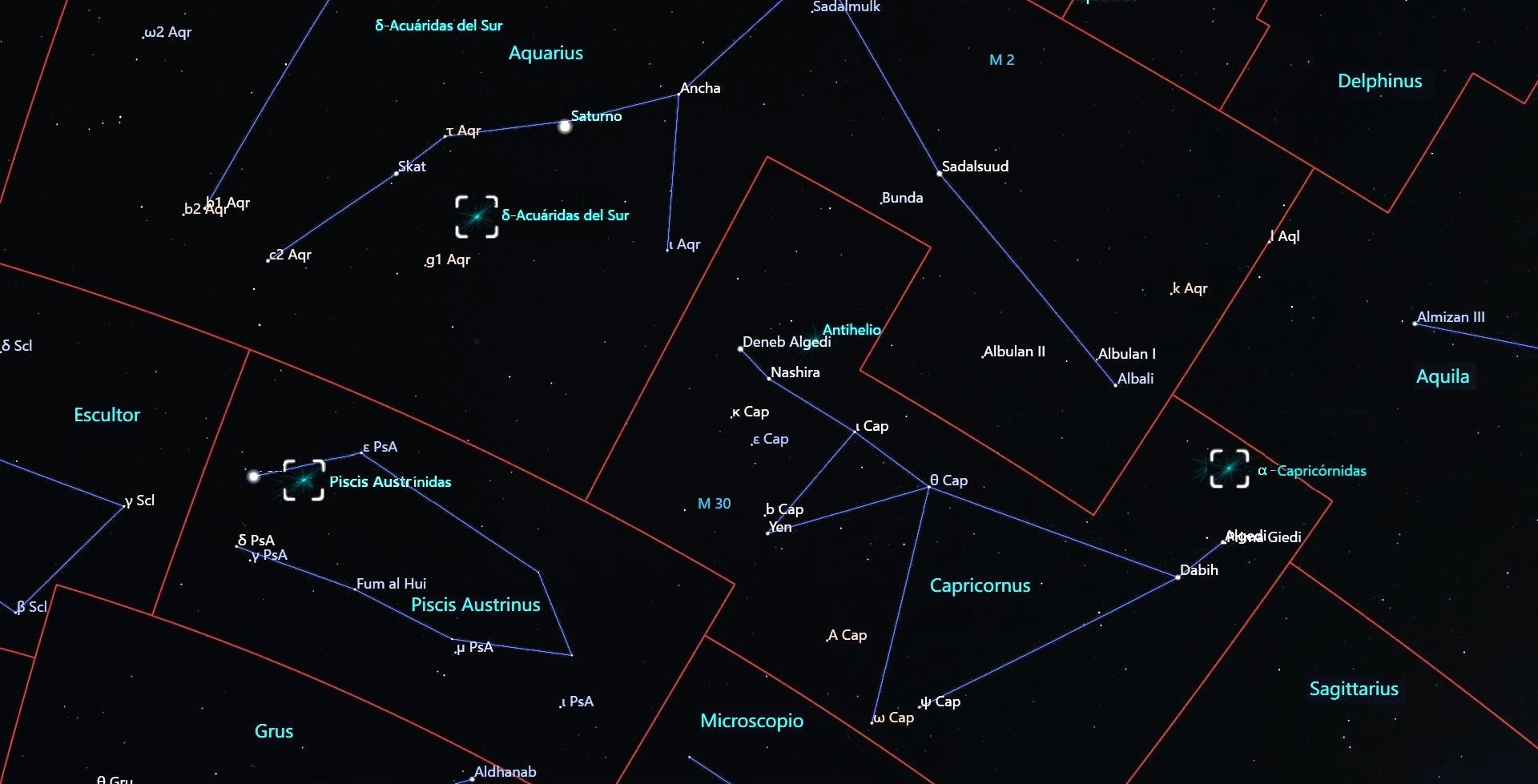Astronomical events of the month of July 2023
The seventh month of the year brings us various celestial objects of great interest. We will talk about the spectacular Crab Nebula, the Albireo double star system, the meeting of the Moon and Saturn, three interesting Messier objects, as well as three moderate meteor showers. Of course and as usual we include the phases of the Moon.
A supernova remnant with a long history
A supernova is, properly speaking, the death of a star that has a mass between 5 and 10 times that of the Sun. During this process, due to a large shock wave, the star violently ejects matter from its outer part into space, generating an expanding cloud, which we know as a supernova remnant.
The Crab supernova was an event that could be seen with the naked eye, for 23 days and more than 653 nights from July 5, 1054; it was documented by Chinese astronomers, although many other cultures in the Middle East, Africa, and the Americas are believed to have observed it as well. The remnant of this supernova is known as the Crab Nebula and houses a neutron star or pulsar (PSR B0531+21) inside. Also known as Messier 1 or M1, it is one of the most studied remnants in the entire history of astronomy and is located in the constellation Taurus.

Albireo, the star that crowns the constellation Cygnus
The double star Albireo is the fifth brightest in the constellation Cygnus and is not one of the most impressive stars in the firmament. However, this does not detract from the beauty of the system composed of ?1 Cyg (Albireo, which is a double star) and ?2 Cyg, which gives us a dance of orange and blue colors, delighting our senses. Albireo is located about 385 light-years from Earth, while ?2 Cyg is located 389 light-years from us, both at the swan's beak. They will be in a good position for observation most nights this month, as we already mentioned, in the direction of the constellation Cygnus, towards the northeastern part of the celestial sphere.
Selene and the Roman god of agriculture will have a meeting
Selene, goddess of the Moon, the only natural satellite of our planet, whose average diameter is 3,474 kilometers and which is located an average of 384,000 kilometers from Earth, this month she will be visiting the sixth planet of the solar system, Saturn, the gas giant with a radius of 58,232 kilometers, only surpassed in size by the colossal Jupiter.
On July 7 at 03:09 (Universal Time) the Moon and Saturn will be in conjunction. The Moon will pass at 2° 40' south of the planet, both in the direction of the constellation Aquarius. The approach will be visible at the edge of 23 hours on July 6, towards the southeastern part of the celestial sphere.
The Messier Catalog opens with a globular cluster
The globular cluster M2, or NGC 7089, was the first globular cluster to be included in the Messier Catalog in 1760, although it was discovered in 1746 by the French astronomer Jean-Dominique Maraldi, while observing a comet. M2 is a spherical group of stars that are united by their gravitational attraction, and that is concentrated in a diameter of more than 150 light years. It is located approximately 37,000 light years from Earth, in the direction of the constellation Aquarius. The M2 cluster contains more than 150,000 stars and is one of the oldest clusters in the Galaxy, with an age of about 13 billion years.
The M2 globular cluster has an apparent magnitude of 6.6, making it an object not visible to the naked eye, but with simple instruments such as binoculars or small telescopes, it can be seen as a small nebula. M2 will be well positioned for observation most of the night, to the east of the celestial sphere.
A noble cluster, M15
The globular cluster M15 was discovered in 1746 by astronomer Jean-Dominique Maraldi, a comet finder, although some references credit Charles Messier with recording it in 1764 and motivating him to undertake a systematic search for comet-like objects, finding in that same year the objects from M3 to M40. William Herschel and his son made observations that allowed them to classify it as a globular cluster, and observations by Admiral Smyth enabled him to describe it as "a noble cluster, which is classified as globular, though not exactly round."
The M15 globular cluster is one of the densest, located 33,600 light-years from Earth, has a diameter of 18 arc minutes or about 175 light-years, and is made up of blue and orange stars, with an approximate age of 13,000. 200 million years; Furthermore, it is known for being the first globular cluster in which a planetary nebula and perhaps an intermediate mass black hole of about 4,000 solar masses was detected.
Due to its apparent magnitude of 6.2, it is easily observable with binoculars or small telescopes, it should be sought in the direction of the constellation Pegasus, towards the southeast of the celestial sphere.
A lovely globular cluster, M55
Globular clusters are composed of several thousand evolved stars, gravitationally bound. They are generally found in the galactic halo, so their features serve astronomers as tracers of distances and ages.
This large cluster was first observed by Nicolas-Louis de Lacaille around 1752 and taken up again, in 1778, by Messier, who included it in his catalog that same year. M55 is a globular cluster of about 100,000 stars and is located only 20,000 light-years away, with an angular size of 0.3 degrees.
The best month to observe M55 or NGC 6809 is July, around midnight, when it reaches its highest point; A pair of binoculars or a small telescope will suffice to find it in the direction of the constellation Sagittarius, to the southeast of the celestial sphere.
A “rainy” end of the month is forecast
If we are a little lucky, from the night of July 28 until dawn on August 1, we will be able to enjoy 3 active meteor showers, so a good number of fleeting ones are expected, perhaps diminished by the presence of Moon.
• The Pisces Austrinid meteor shower will be active from July 15 to August 10, with its maximum on July 29. The maximum observable rate will be 5 meteors per hour, in the direction of the constellation of the Austral Fish. The precursor object of the rain is unknown, but the best time to observe them will be at dawn on the 29th, towards the southeastern part of the celestial sphere.
• The Southern ? Aquarids Meteor Shower will be active between July 12 and August 23, with its maximum on July 30. The maximum observable rate will be 25 meteors per hour, in the direction of the constellation Aquarius. The object that gives rise to this meteor shower is comet 96P/Machholz. It is expected that the best time to observe them will be at dawn on the 30th, towards the southeastern part of the celestial sphere.
• ? Capricornids meteor shower. Activity from July 3 to August 15, with a maximum on July 30. The maximum observable rate will be 5 meteors per hour. The radiant is in the direction of the constellation Capricorn. The body responsible for the shower is comet 169 / NEAT, hoping that the best time to observe them will be in the early hours of the 30th, towards the southeastern part of the celestial sphere.
Phases of the Moon (Central Mexico time)

Watch the video with the events of the month: https://youtu.be/99Uu-PNZ01k
Contacts:
Dr. Agustín Márquez Limón (amarquez@inaoep.mx), Coordinación de Astrofísica-INAOE
Dr. Vicente Hernández Hernández (planetariodecozumel@gmail.com), Red de Planetarios del Estado de Quintana Roo
Dr. Raúl Mújica García, (rmujica@inaoep.mx), Coordinación de Astrofísica-INAOE y Noche de las Estrellas
Luis Enrique Erro # 1, Tonantzintla, Puebla, México, Código Postal 72840, Tel: (222) 266.31.00, difusion@inaoep.mx
This work is licensed under a Creative Commons Attribution-NonCommercial-NoDerivs 2.5 Mexico License.








